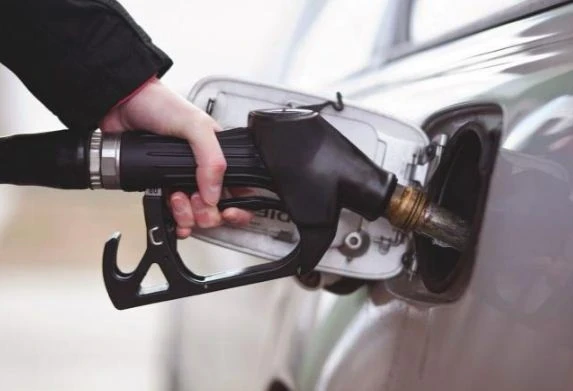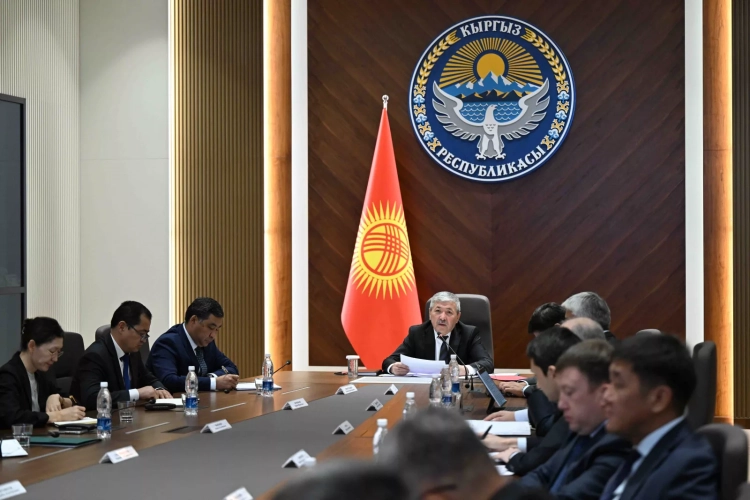
THE COUP IN PISHPEK The political coup that began in Pishpek was accompanied by a change of power,...

The Tsar is Overthrown. The life of the people did not improve. In early 1917, the news spread...

Soon A. Sydykov resigned, as the Provisional Government disappointed the expectations of the...

Financial hunger. The first paper money - banknotes - were issued in Russia in 1796. Unlike the...

The Beginning of the Recognition of Soviet Power in Pishpek and the District In the summer,...

The Socialist-Revolutionary Party (SRs) was formed in Russia in 1902 and made a loud statement...

February Bourgeois-Democratic Revolution of 1917 in Osh. The overthrow of the tsarist autocracy on...

The establishment of Soviet power and statehood in Kyrgyzstan began after the October Revolution...

The EU will provide Kyrgyzstan with a new government budget support program of 30 million euros,...

In an interview with the President of the Association of Oil Traders of the Kyrgyz Republic,...

Daniyar Amangeldiev also noted that Kyrgyzstan continues negotiations with Russia regarding fuel...

In order to control the price situation in the coal extraction and sales market, to curb price...

The cost of vehicle registration in the KR may be reduced by three times The government of the KR...

The strength of the state lies in its budget. This postulate is indisputable. The main task of tax...

The hastily assembled Soviet government clearly lacked people who were not just revolutionaries,...

After the Turkish Air Force shot down the Russian bomber Su-24, which was participating in the...

The results of the parliamentary elections in Kyrgyzstan have been summarized. Six parties have...

The primary task of the Government and the National Bank of Kyrgyzstan (NBK) is financial...

Forced Liquidation of the Kokand Khanate The tsarism, the patron of the Kokand khans, failed to...
The State Agency for Management of State Property reported that Kyrgyzstan's alcohol products...

Today, October 30, the First Deputy Prime Minister of the Kyrgyz Republic, Taiyrbek Sarpashev, met...

Argentina. Argentine Republic. A country in the southeastern part of South America. Area - 2.8...

The government of Kyrgyzstan has approved the "road map" project for joining the Customs...

"Kyl-kuyruk" Abdurakhman Aftobachi, who had recently returned from Mecca, where he went...

The Government of Kyrgyzstan has decided to introduce a temporary moratorium on the licensing of...
The investigation into the opposition conspiracy to overthrow the government continues in...

The Alash Party and its leaders were accused of betraying the interests of their people in 1916,...

On March 13, a presentation of a photo exhibition dedicated to the 70th anniversary of the Great...
A draft resolution of the Cabinet of Ministers of the Kyrgyz Republic concerning the introduction...

It has become known that tungsten deposits currently represent significant interest for the United...

Brazil. Federative Republic of Brazil The largest country in South America, located in its western...

The executive power in the Kyrgyz Republic is exercised by the Government of the Kyrgyz Republic....
At the moment, there is no legal framework in Kyrgyzstan that allows banks to effectively work with...

The Federal Democratic Republic of Ethiopia is a country in Northeast Africa. Area - 1,096,000...

Orientation of the Uprising Kyrgyz Workers Towards Russia The Kyrgyz workers, fighting against the...

Today, November 24, during a meeting of the Government of the Kyrgyz Republic, the second item on...

GUAM A U.S. territory in the western part of the Pacific Ocean on the island of the same name in...

In Kyrgyzstan, the campaign "Global Money Week" began on March 14, during which...

Osh Before the Revolution In Kyrgyzstan, the largest market was the Osh market. Its turnover...

RESOLUTION OF THE COUNCIL OF THE NATIONAL ECONOMY OF THE KYRGYZ SSR ON THE PARTIAL COMMISSIONING...

Imports to Kyrgyzstan account for approximately a quarter of the total consumption of public goods...

A. Bukeykhanov, M. Tynyshpayev, Zh. Seydalin, M. Dulatov, and others played a significant role in...

Free financial literacy training! Learn, fill yourself with useful knowledge, and live free from...

The uprising was not for the religion of Islam, but for social and national freedom. After the...

On October 8, this was stated by the Minister of Economy of Kyrgyzstan, Oleg Pankratov, at a press...

Kozhomurat SARYKULAKOV (1892-1918) — a public figure, one of the first Kyrgyz students who studied...

National Liberation Uprising The uprising we are interested in took on a religious guise; however,...

Who hasn’t heard of juniper? Or cedar? Or cypress? Evergreens — in the literal sense of the word:...